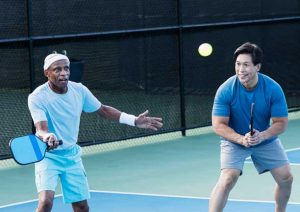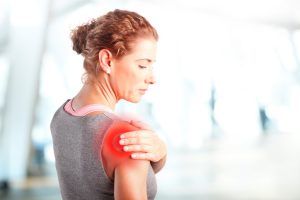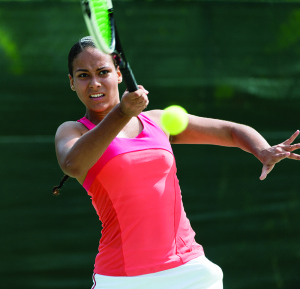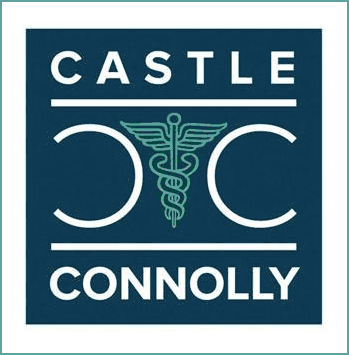
Frozen Shoulder and Hip Pain in Menopause: A Guide to Relief and Support
Find relief from frozen shoulder and hip pain during menopause. Learn about causes, treatments, and lifestyle tips to move comfortably again.

Find relief from frozen shoulder and hip pain during menopause. Learn about causes, treatments, and lifestyle tips to move comfortably again.

Learn about AC joint injuries & separated shoulders, their causes, symptoms, and treatment options, from mild sprains to severe separations.

Nursemaid’s elbow is a common injury in young children, causing arm discomfort. OrthoConnecticut offers expert, quick treatment to restore movement.

Medically reviewed by Dr. Michael Brand The rapid rise of pickleball, a fast-paced and exhilarating sport, has been remarkable. With its blend of tennis, badminton, and ping-pong, pickleball offers a unique avenue for recreation, athletics, and competition. However, like any physical activity, it comes with its share of risks, especially concerning bone, joint, and musculoskeletal injuries. Our orthopedic professionals recommend proper injury prevention techniques and treatment to avoid injury and maintain optimal health. The Most Common Pickleball Injuries Despite its relatively low-impact nature compared to other sports, pickleball can still lead to injuries, particularly in the joints and muscles. Common pickleball injuries include: Orthopedic Treatment for Pickleball Injuries Prompt evaluation and treatment are crucial for addressing pickleball-related injuries effectively. Orthopedic specialists play a pivotal role in diagnosing and managing these conditions. Here’s what patients can expect during their orthopedic care: Returning to Pickleball Safely: While the desire to return to the court may be strong, it’s essential to prioritize a gradual and controlled comeback. Light drills and gradually increasing intensity can help assess readiness and prevent re-injury. Communicating with your orthopedic physician or physical therapist allows for ongoing progress monitoring and adjustment of treatment plans as needed. Injury Prevention: What Doctors Wish People Knew About Preventing Pickleball Injuries Orthopedic doctors play a crucial role in treating pickleball injuries, and they often have valuable insights into preventing these injuries from occurring in the first place. Here are some key points that doctors wish people knew about preventing pickleball injuries: 1. Warm-Up Properly Doctors emphasize the significance of warming up before engaging in pickleball or any physical activity. A proper warm-up routine helps increase blood flow to the muscles, improve flexibility, and prepare the body for gameplay demands. Dynamic stretching, light cardio exercises, and joint mobilization techniques are essential to a good

Elbow pain can be a frustrating and debilitating condition that affects people of all ages and activity levels. It can make even simple tasks like getting dressed or lifting objects difficult, and can severely impact a person’s quality of life. There are many different causes of elbow pain, ranging from overuse injuries to fractures and dislocations. In this article, we will explore some of the most common causes of elbow pain and their associated symptoms, as well as discuss some of the most effective treatments for alleviating elbow pain and restoring function to the joint. Whether you are an athlete dealing with a sports-related injury or simply someone experiencing chronic elbow pain, this article will provide you with the information you need to understand your condition and find relief. My Elbow Hurts When I Bend and Straighten It: What Gives? Elbow pain can cause difficulty when getting dressed, cooking, lifting and of course when playing racket sports. Because the elbow is a complex joint, made up of bones, muscles, ligaments (connecting the bones) and tendons (connecting muscles to bone), it isn’t always easy to determine what is causing elbow pain. Some of the most common causes for elbow pain are: 1. Tendonitis When the tendons in the elbow become inflamed, most often due to repetitive or overuse, the result is tendonitis. Tendonitis can cause pain that radiates from the elbow up the arm or down the arm, depending on which of the two tendons are affected. 2. Tennis Elbow and Golfer’s Elbow These conditions are also a form of tendonitis, resulting from overuse of the tendons in the arm. Tennis elbow is a result of inflammation of the outer arm, while Golfer’s elbow results in pain along the inner arm. These conditions are not restricted to those who play golf or tennis

Shoulder Labrum Tear Symptoms Do you feel aching pain in the front or back of your upper arm or shoulder? Do otherwise normal shoulder movements cause pain? Do you have less strength or less range of motion when lifting or throwing, or feel popping, grinding, catching, locking, or less stability when moving your arm? These are symptoms of a Shoulder Labrum Tear. What exactly is a shoulder labrum tear? A shoulder labrum injury, or dislocation, is an injury to the front or back ring of soft fibrous cartilage (called the labrum). The labrum surrounds the shoulder socket (glenoid) where the bicep tendon attaches to the upper arm bone (called the humerus). The labrum cartilage helps hold the head of the humerus in place and provides stability to the shoulder and upper arm. Three Types of Shoulder Labrum Tears Why a Shoulder Labrum Tear Happens How and why does this happen? Labral tears are difficult to prevent. People who experience this range from athletes to people 30 and over with overused and worn cartilage, to elderly with aging brittle cartilage. Younger people more often experience a labrum tear as a partially or completely dislocate the shoulder. What kinds of activities or accidents are prone to tears? Diagnosing Shoulder Labrum Tears What can you do for a shoulder labrum tear? It’s important to see your physician, or orthopedic surgeon, for proper diagnosis and treatment options. A physical exam may include: What tests are used in diagnosing? To help review the severity of the tear plus check for other possible shoulder issues, sometimes these tests are conducted: Treating Shoulder Labrum Tears Non-surgical steps are usually the first treatment option including: If surgery is necessary – what happens? Surgery, if required, has different options depending on level of tear or shoulder stability. For example:

If you’ve had a “frozen shoulder”, you know this is an extremely painful condition where you are unable to move your shoulder or lift your arm upward or backward, either on your own or with the help of someone else. It’s scary when everyday activities such as sleeping, dressing, washing dishes, combing hair, clasping and unclasping a bra, or reaching for a wallet in a back pocket can become difficult or impossible. What is a frozen shoulder? First, to clear up a misconception, frozen shoulder is sometimes confused with arthritis, but the two conditions are unrelated – whereas signs of a rotator cuff tear could be instead a frozen shoulder. Sometimes called “adhesive capsulitis”, a shoulder “freezing” occurs when the shoulder’s joint capsule membrane thickens. This tissue band surrounding the joint becomes stiff and tight and can also grow new adhesions making mobility even more difficult. View OrthoConnecticut’s animation from ViewMedica, which illustrates this process well. Why does this happen? It’s not well understood why the shoulder “freezes”, but these situations make it more likely to happen: Who does this most often affect: What are the symptoms and stages? Signs and symptoms typically begin gradually, worsen over time and then resolve, usually within one to three years. The stages are fairly typical across patients: What can you do for a frozen shoulder? See a physician for a diagnosis which may include a review of symptoms, physical exam of arms and shoulder, and x-ray or MRI to identify structural issues. For 9 out of 10 patients, time and treatment bring relief. Here are some options to help reduce pain and improve functionality: Here is an interesting takeaway from OrthoInfo that reviews some of the basics of a frozen shoulder. OrthoConnecticut Can Help Our physicians and physician assistants are available to help

Many of the patients I see with shoulder pain have injured themselves as the result of strenuous, weight-bearing exercise. As high impact, strength-related exercise programs have increased in popularity, many people are putting too much weight on their shoulder joints. While the benefits of exercise are indisputable, it is important to understand how the shoulder works and how best to avoid injuring this delicate joint. The shoulder is built for range of motion rather than stability. It is a ball-and-socket joint held in place by a thin sleeve of muscles and tendons called the rotator cuff. Excessive weight on the shoulder can damage the cuff as well as other soft tissues around the joint. Exercise programs that work the large chest and back muscles should also include exercises with light weight or elastic bands for the smaller rotator cuff muscles. If you feel shoulder pain when exercising or playing sports, DO NOT WORK THROUGH THE PAIN. Rest your shoulder for two weeks and take over-the-counter anti-inflammatory medication such as ibuprofen, if necessary. If, after two weeks, you return to your activity and still feel pain, you should consult an orthopedist. Repetitive or continuous use of the shoulder at a young age can lead to injury. Children under the age of 16 should avoid playing any single sport for more than 8 months of the year, especially swimming, baseball or tennis, to prevent shoulder overuse. Heavy weight training is also a potential cause of injury. OrthoConnecticut, a member practice of OrthoConnecticut, offers an expert group of orthopedic specialists, including a team of sports medicine doctors who work with sports-related injuries and conditions of all kinds. The practice has its own x-ray, MRI and on-site physical therapy specialists, allowing patients to recover in one single, integrated location. All the practice’s physicians are

By Paul D. Protomastro, M.D. Hand & Upper Extremity Surgeon, OrthoConnecticut TENNIS AND GOLFER’S elbow are common orthopaedic conditions that lead to pain, weakness and disfunction of the elbow. Both conditions actually represent tears of the forearm tendons off of the humerus bone at the elbow. A tear on the outside (lateral) part of the elbow is known as Tennis elbow. A tear on the inside is known as golfer’s elbow. The muscles involved in this condition help to extend (tennis) and flex (golfer’s) the wrist. With both disorders there is degeneration of the tendon attachment usually following repetitive grasp or lifting activities and subsequent weakening of the anchor site leading to tendon detachment. Patients usually experience the insidious onset of elbow pain associated with activities in which this muscle is active, such as lifting, gripping, and/or grasping. Sports such as tennis, golf and weight training are common causes. The problem can occur with many different types of activities such as home renovation and gardening.
Call OrthoConnecticut today at 1.833.678.4628 to learn more or to schedule an appointment.
Accessibility statement
for individuals with disabilities:
We are committed to ensuring that our website and mobile applications are accessible to individuals with disabilities. Please use the blue icon in the lower right corner to access many helpful tools. If you need assistance using our website, or assistance with a document on the website, we can help you. Please contact us by email at info@myorthoct.com or by telephone at 1.833.ORTHOCT (1.833.678.4628).
1.833.ORTHOCT
(1.833.678.4628)



Accessibility statement
for individuals with disabilities:
We are committed to ensuring that our website and mobile applications are accessible to individuals with disabilities. Please use the blue icon in the lower right corner to access many helpful tools. If you need assistance using our website, or assistance with a document on the website, we can help you. Please contact us by email at info@myorthoct.com or by telephone at 1.833.ORTHOCT (1.833.678.4628).
We are committed to providing comprehensive care to Fairfield County, New Haven County, Litchfield County; New York State's Westchester, Dutchess, & Putnam Counties; and the Great Barrington region of Massachusetts.
This website provides general information about OrthoConnecticut, its practice areas and professional staff. Nothing in this website constitutes individual medical advice which may only be obtained as a result of personal consultation with a physician. Sending an e-mail to OrthoConnecticut, its physicians or office staff does not create a patient-physician relationship.
© 2025 OrthoConnecticut | Accessibility Statement | Site Map | Terms of Use | Non-Discrimination Policy | Website Design: Brandmark Studios